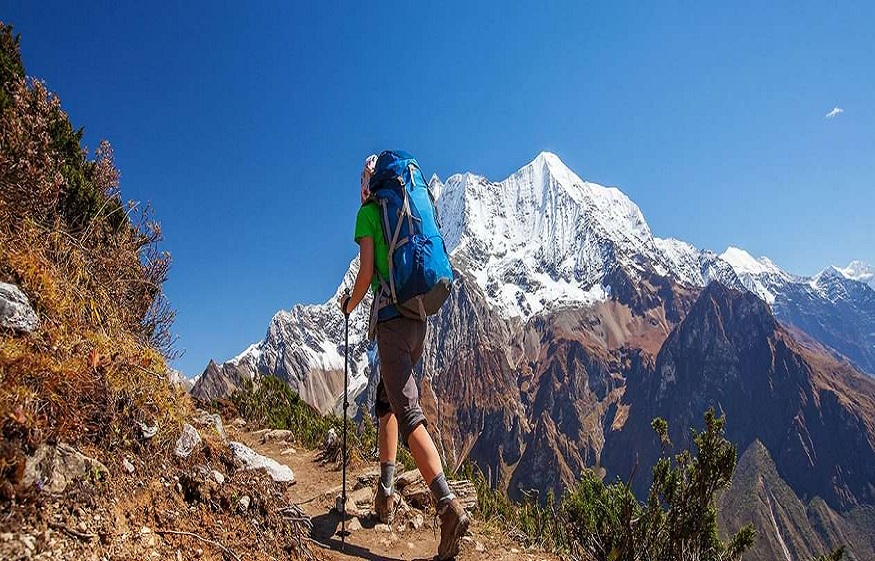
Manaslu Circuit Trek Difficulty in Nepal is a once-in-a-lifetime adventure filled with incredible Himalayan beauty, genuine cross-cultural experiences, and a feeling of wilderness that very few trails deliver. If you are a beginner who wants to give this adventure a shot, you’ll feel it’s quite intimidating at first, but with enough preparation and the right mindset, it is a very rewarding challenge. The circuit wraps around the magnificent Mount Manaslu, the world’s eighth-highest mountain, and through a range of landscapes, including lowland rice fields and thick forests, to alpine meadows and looming snow-capped peaks.
Manaslu is considered one of the best treks of Nepal, comparable with the 3 passes, EBC, and Annapurna circuit, but miles away from the crowded trails and lodges. The trail is approximately 177km long and you can walk the trek in about 14 to 18 days, depending on your pace and the time needed to acclimatize to the high altitude. Because the area is restricted, you’ll need a government-licensed guide and permits, too (Manaslu Restricted Area Permit, MCAP, and ACAP). The most common trail leads from Soti Khola to Dharapani, with a steady upward climb to the high point at Larke Pass, at 5,160 meters.
The precondition for reading for a beginner is physical well-being. Just keep hiking, doing cardio, and building your stamina up weeks in advance, and the trek will be so much more fun. And it’s important to pack smart — layered clothes, good boots, a decent sleeping bag, and water-purifying equipment are essentials. Anticipate rustic teahouse lodgings and basic meals such as dal bhat along the route. It’s certainly not the easiest trek you’ll ever do, but the pay-off is spectacular mountain views, a taste of Tibetan-esque culture, and a hearty sense of accomplishment. With nature, culture, and challenge in equal measure, the Manaslu Circuit makes a great off-the-beaten-path choice for newbies seeking an adventure.
Introduction
Manaslu Circuit Trek is one of the most appealing yet less trodden treks of Nepal, which encircles the majestic Mount Manaslu, the eighth highest mountain in the world, and other mountains in its periphery. For those wishing to get off the beaten path, it is a less touristy option compared to the more crowded Everest and Annapurna regions. There is something very enticing about this trek, and that, of course, is that it manages to offer a Himalayan adventure – impressive mountain views, dramatic scenery, and friendly local people – without the teahouse crowds!
Circling Mount Manaslu (8,163 metres), the eighth highest mountain in the world, the trail covers lush forests, plunging river gorges, isolated communities, and crosses one of its highlights – the legendary Larke Pass (5,106 metres). Known for its rugged, isolated feel, the trail today is somewhat more accessible and navigable for adventurers of moderate experience who are in good shape and well prepared.
First, we’re going to look at precisely what the Manaslu Circuit Trek involves, why it is suitable for beginners, when to do it, and what permits you to have this memorable experience of a lifetime. If you’re looking to escape the crowds and the typical trekking circuits and have yet to do a trek, or are simply trying to escape the growing corporatisation of certain trekking routes, then the Manaslu Circuit is exactly what you’re looking for.
What is trekking in the Manaslu Circuit Trek?
Short Manaslu Circuit Trek The Manaslu Circuit Trek is an adventurous trek that combines the lush lowlands of Gorkha with the arid territories of Manaslu, the eighth highest mountain on earth. It’s a teahouse trek, which means you stay in locally operated lodges along the way (providing cultural experience and basic comfort). The trail begins at Soti Khola and terminates at Dharapani to join the Annapurna circuit while crossing the high and adventurous Larke pass.
The journey leads you through a diverse collection of terrains, encompassing lowland terraced fields and subtropical forests, to alpine meadows and glacial valleys. You’ll trek through traditional villages like Jagat, Samagaon, and Samdo, where locals are heavily influenced by Tibetan Buddhist culture. Along the way, you’ll pass ancient monasteries, spinning prayer wheels, and towering views of Manaslu, Himlung Himal, Ganesh Himal, and others.
Compared with more popular treks, the Manaslu Circuit is much less frequented and calm, making for a more peaceful trek. It does demand a Restricted Area Permit (RAP) and must be completed with an officially licensed guide, which helps to maintain the area’s remarkable charm and restricts the number of hikers on the trail.
Though the route has its share of steep ascents and high-altitude stretches, it’s generally clear and allows for gradual acclimatization. It’s ideal for adventure seekers trying to experience something raw and genuine but without requiring technical mountaineering expertise.
Why It’s Great for Adventurous Beginners
If you are inexperienced with multi-day treks but still crave an authentic adventure, then the Manaslu Circuit Trek is the circuit trek for you. Due to its remoteness and high pass crossing, it’s often considered a challenging trek, however, it’s entirely possible for adventurous beginners in good fitness and with a positive attitude.
The difference with Manaslu when you are a first-timer is the gradual gain in height. The path was made to allow your body to condition itself to the higher altitudes, which minimizes the risk of altitude sickness. The number of trekking hours each day is sufficient to allow us to rest and relax without being whacked.
The trail is also less congested than more trodden treks like Everest Base Camp or the Annapurna Circuit, which means a more serene trek and less competition in securing space at teahouses. Here’s one big point in favor of the newbies who may like a more relaxed entry into trekking life.
The varied landscapes also really keep you going with magical forests, waterfalls, and snow-capped peaks. The cultural experience is also very rewarding, for you will see Tibetan-influenced villages, old monasteries, and some genuine hospitality, which will make your trek more of a personal journey, and the happy memories will stay with you for a long time.
All first-time trekkers are supported by an experienced guide and porter. It’s not easy, but the Manaslu fits the bill for anyone seeking a taste of high-altitude trekking on a challenging route that promises beauty and cultural richness.
Best Time to Trek
Picking the perfect season is the secret to getting the most out of your Manaslu Circuit Trek. The best times to trek are spring (March–May) and autumn (late September–November). These are the windows of the calmest weather with clear, warm days when walking is pleasant and overall is perfect for both views and safety on the trek.
Spring (March to May):
The Manaslu Circuit Trek is most popular during the spring season. At this time, the hills are covered in rhododendron in flower, and the days are generally warm and sunny. Mountains are usually visible, and fewer opportunities for deep snow on the Larke Pass. Although it can be hot in the lower portions during the day, nights spent up here are cool and refreshing.
Fall (Late September – November):
The trek is most often done in the fall. The skies are extra clear post-monsoon, and we have stunning views of Manaslu and neighboring peaks. The trails are firm and the temperatures are clement. The nights do get cold at higher elevations, but the overall environment creates enjoyable trekking.
Omitting the monsoon (June-August) when the route is treacherously slippery from mud and slimy leeches, and winter (Dec-Feb) when the Larke Pass is frequently closed by snow.
The most favorable compromise of weather, beauty, and accessibility to Everest is offered between the beginning of March and the end of May, and between the beginning of September and the end of November.
Permits and Regulations
As the Manaslu Circuit is in a restricted area, you must get special permits in order to trek here. These permits are designed to help manage the flow of tourists, aid in preserving the environment, and protect the cultural and environmental distinctiveness of the area.
Here are the permits you need:
Restricted Area Permit (RAP):
This is compulsory for all trekkers from Jagat to Sama Gaun. The cost varies by season:
September -November: $100 for the first 7 days, $15 for additional days
DAY RATES: December to August: $75 for the first 7 days, then just $ 10 per extra Day
This permit can be purchased from a registered trekking agency; you are also required to trek with at least two other people and a licensed guide.
Manaslu Conservation Area Project (MCAP):
This is for NPR 3,000 (about USD 25) for entry to the Manaslu Conservation Area.
Annapurna Conservation Area Permit (ACAP):
Once you cross over Larke Pass, you are in the Annapurna region, which is why you need this extra permit (this also costs NPR 3,000).
And basically, you’ll be stopping at several checkpoints, so always have your passport and passport pictures with you.
By adhering closely to these regulations, you not only keep yourself safe, but you also help to maintain this wonderful trekking area intact for future trekkers to appreciate.
Physical Readiness and Health Tips
Getting your body ready for the Manaslu Circuit Trek is very important, especially if you are a complete beginner. It includes rough terrain, high altitude, and long hours of daily trek, which can be approximately 6 to 8 hours. Start your training at least 8 to 12 weeks in advance to develop strength and stamina. Try aerobic exercises like walking, running, biking, and swimming, which will help to improve your lung capacity and cardiovascular endurance. You also need to focus on strength training — squats, lunges, planks, and core work will work to nix aches and pains from the trail, and particularly from a backpack.
Manaslu Circuit Trek Nepal Add weekend hikes with a weighted daypack to prepare yourself for walking with a pack, and to toughen up your feet and muscles. (If you can, do your training at higher elevations, or climb stairs and hills to replicate altitude stress. Yoga or stretching exercises are also good for flexibility and recovery after a trek. Most of all, listen to your body. Don’t kill yourself, but establish a routine. You should be able to comfortably walk several hours with only brief breaks by the time you set foot on a trail. Physical preparation is not only vital for injury prevention but also makes the experience significantly more enjoyable.
Packing Essentials
Smart packing for Manaslu Circuit Trek involves taking only that stuff which you need and not more than that. The weather changes rapidly along the route, so layers are a good idea. A moisture-wicking base layer, an insulating mid-layer (fleece or down), and a waterproof outer layer are key. Strong, well-worn hiking boots, thermal socks, a warm hat, gloves, and UV-protective sunglasses are a must. Pack a warm sleeping bag up to -10°C and a daypack or duffel bag that stays within the 10–15kg porter load for porter service.
For gear, pack trekking poles, a headlamp with extra batteries, water bottles or (better yet) a hydration bladder, and a water purification method (tablets, filters, or UV pens). Sunscreen, lip balm, a quick-dry towel, and biodegradable soap are the basic hygiene kits. It’s also smart to pack a basic first-aid kit containing altitude medication, snacks such as energy bars or trail mix, and power banks for charging electronics. Packable, quick-drying, and layerable clothing is your best friend. Outfit yourself with the right basics, and you’ll be prepared for whatever the trail might toss your way.
“Guided” and “Unguided” Ways You Can Hike
Manaslu Circuit Trek is a restricted trekking region of Nepal, and you are not allowed to trek on your own. You have to take a licensed guide and must trek in a minimum group of two. This makes solo, unguided trekking impossible, the legislation is beneficial for safety and cultural understanding. A fully organized trek guided through an agency or a completely independent private group trekked with a freelance guide is a matter of personal choice and budget.
A trek with an agency usually covers permits, hotels, meals, transport, and the assistance of a guide and some porters. This is the easiest option to go for, and good if you are a beginner trekker. Doing independent trekking but hiring a guide and a porter provides a lot more flexibility — and often a more personalized experience — but you’ll also have to deal with logistics, like accommodations, food, and permits, yourself. In any case, you’ll want a guide on Manaslu for the remoteness, the lack of signage, and, of course, cultural differences. They assist with navigation, language barriers, and in the event of an emergency, so that everything runs smoothly and you have an enriching experience.
Tips for Acclimatization and Altitude
Manaslu Circuit Trek Map There is a lot of acclimatization needed on the Manaslu Circuit. It’s a gradual rise from about 700 meters to 5,160 meters at Larke Pass, so it takes time for your body to acclimatize to lower oxygen. The pace and progress of the climb are important—don’t push the ascent. Most trips also build in rest days at around 3,500–4,000 meters, typically in Samagaun or Samdo, which are crucial for lowering the risk of altitude sickness.
Important tips for acclimatization are to: 1) Follow the “climb high, sleep low” mantra, 2) Maintain hydration by consuming 3–4 liters of water per day, and 3) Avoid alcohol or smoking. It’s very common for the preventive medication Diamox (acetazolamide) to be recommended, but speak to a doctor before taking Diamox. Identify the warning signs of altitude sickness: headache, nausea, dizziness, or difficulty sleeping. If they don’t, come down. Taking it slow, eating balanced meals, and getting plenty of rest are your best weapons.
Knowing your limits (and honouring them) is critical in the mountains. Your guide will observe the condition and adapt accordingly. Proper acclimatization ensures that not only do you stay out of trouble, but you also enjoy some of the most amazing high-altitude scenery anywhere on Earth with ease of mind.
Last Words for First-Time Trekkers: Clear your mind and be present.
The Manaslu Circuit is intimidating for first-time trekkers, but with some proper mindset, and before you know it, you will have an incredible adventure. Face the challenge patiently — don’t compare yourself to others, don’t rush. Slow down and enjoy the landscape, cultures, and being on the road, not just at the destination. Prepare yourself physically, pack light but smart, and embrace the trip with a good attitude and be willing to adapt to what the weather, the trail, and a little discomfort throw at you.
Follow your guide, ask questions, and learn from locals — it will enhance your experience. When visiting villages and monasteries, be mindful of traditional dress codes and dress appropriately. Be a good earthling: carry out your trash, purify water instead of buying plastic bottles, and stay on marked trails. You HAVE to listen to your body, especially for altitude and fatigue. Do not hesitate to take breaks or turn around, if need be. Trekking is as much a journey in self-discovery as it is a venture to cover a physical distance.
Finally, be flexible with your expectations. Mountain weather, accommodation availability, and daily distances can suddenly change without notice. Be open, be humble, and you will return home from Manaslu with more than beautiful photographs; you’ll return with a deeper understanding of nature, culture, and your resilience.
How to plan the Manaslu Circuit trek?
There are a few things you need to do before you Manaslu Circuit Trek to get ready for one of the most adventurous and beautiful treks of the Manaslu region. Start by considering the best time to go — late spring (March through May) and autumn (September through November) present the ideal weather for trekking. Most will complete the trek in 14-18 days, depending on how fast you want to go and how well you acclimatize.
Begin by getting the required permits. The trek also demands the Manaslu Restricted Area Permit (MRAP), Manaslu Conservation Area Permit (MCAP), and Annapurna Conservation Area Permit (ACAP). These permits are available from any registered trekking agency or in Kathmandu.
Then, you’ll have to organize a transfer from Kathmandu to the beginning of your trek at Soti Khola. Logistics of the trip, accommodations, meals, and distances per day need to be planned. Most trekkers choose one of the guided treks, because the upper Manaslu is a restricted area and it would be mandatory. first. You will have a licensed guide to help you stay on track, follow local regulations, and answer questions about culture and landscape.
‘And our bodies have to be ready for it. Concentrate on building cardio, strength, and endurance. Acclimatization is key to avoiding altitude sickness; ensure that you build in rest days during the trek to acclimate to the ever-increasing altitude.
What should I pack for the Manaslu Circuit?
Manaslu Circuit Trek Packing is something to put a little thought into, as temperatures and altitude can fluctuate during the trek. It covers terrain from lower altitudes to the Larke Pass at 5,160 meters, meaning you should be prepared for both warm and cold conditions.
Begin with your clothing. Base layers that wick perspiration away from your skin, a performance fleece or down jacket for insulation, and a waterproof and windproof jacket to shield you from the elements are a few key pieces of a winter wardrobe. Make sure to have strong, well-worn trekking boots, a good pair of socks, and comfortable trekking pants. And, along with a variety of comfortable, moisture-wicking clothing, I’ll be sure to pack a warm hat, gloves, and sunglasses to defend against the wintry chill and the strong high-altitude sun.
You will need your sleeping bag to be rated for -10c or cold nights can be freezing above solo. For cleanliness, pack biodegradable soap, toilet paper, hand sanitizer, and a small towel for hygiene. And don’t forget water purification tablets, a filter, or an ultraviolet purifier to ensure you can safely drink those waters along the trail.
Bring trekking poles for stability, especially in steep, rocky sections. A first aid kit with altitude sickness medicine, blister treatment, and any personal medicine is a necessity. Chocolate, energy bars, and trail mix are also sure to keep your energy levels high on the long days. Also, bring a power bank to charge your devices and a camera to capture the stunning landscape.
Do you need a guide for the Manaslu trek?
Manaslu Circuit Treks Nepal Yes, you need a guide to hike the Manaslu Circuit. Manaslu is a controlled area, and trekkers need licensed guides to accompany them to get a special restricted permit for Manaslu. The objective of this rule is to save the humanity of the trekkers, particularly at remote and rugged routes, where it is difficult to go and navigate, and rescue may be scarce.
A guide will offer you several benefits. They assist with navigation to keep you on the right trail and have a wealth of knowledge about the terrain, weather, and route conditions. They can help organize logistics, including booking teahouses, setting up food, and assisting with permits along the route. Moreover, the guides are first-aid certified and can assist with any emergency, such as altitude sickness, which is a normal concern as you reach higher elevations.
Apart from logistics and safety, a guide further enhances your trekking experience. They will inform tourists all about the local culture, the wildlife, and the history, elaborating on the trek’s cultural and educational components. For the most part, trekkers will often feel that it contributes to their overall experience, and they get to fully concentrate on the adventure whilst they’re in safe hands.
How much is the Manaslu trek guide?
The price for a guide for the Manaslu Circuit Trek typically varies from $25 to $40 per day, depending on the season, the experience of the guide, and if they’re working through an agency. That rate will also typically include the guide’s pay, as well as food, lodging, and insurance while on the trek itself. Prices vary, so it’s best to verify all costs in advance with the agency or the guide you’re working with.
Besides the guide fee, you also have to pay for the trekking permits required for the trek, which are the Manaslu Restricted Area Permit, the Manaslu Conservation Area Permit, and the Annapurna Conservation Area Permit. Those permits ran me about $100USD to $150USD in all.
And if you choose to hire a bike porter as well as a guide, you can expect to pay an extra $ 15- USD 25 per day. A porter will carry your heavy gear so you carry only a daypack, a practice that can make the trek more comfortable, particularly on longer stretches.
Hiring a guide added to the cost of the trek, but was necessary for safety, navigation, and immersing myself in a richer cultural experience. Thousands of trekkers will tell you the added cost of having a professional guide is well worth the money, both for the peace of mind it provides and the intimacy with the region enjoyed by following in the boots of a local.





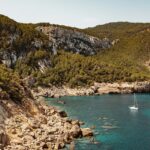
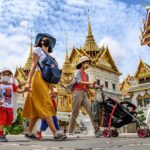
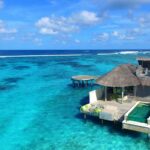
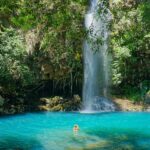
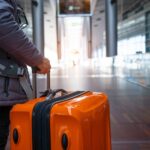
Leave a Reply
You must be logged in to post a comment.